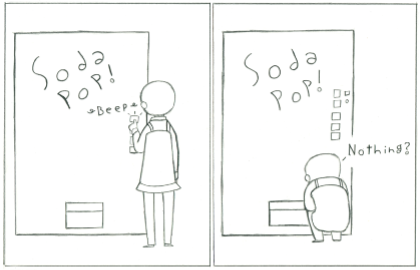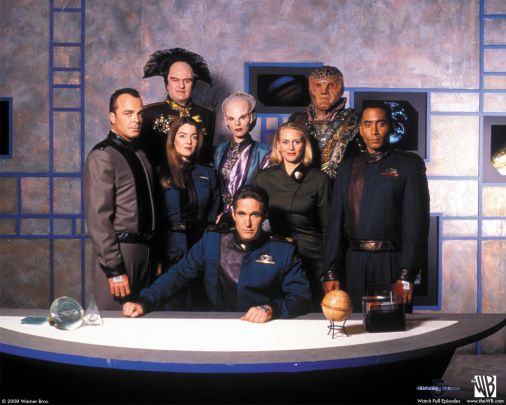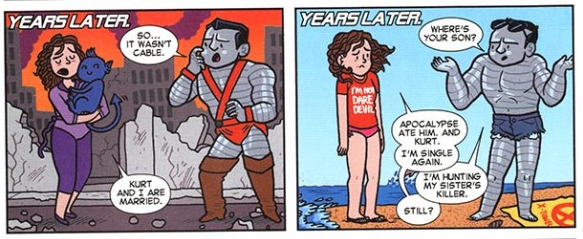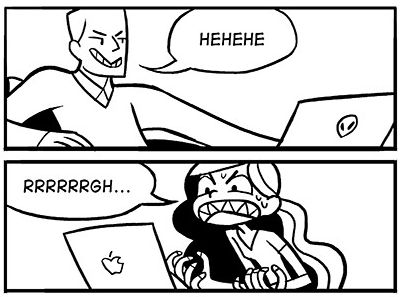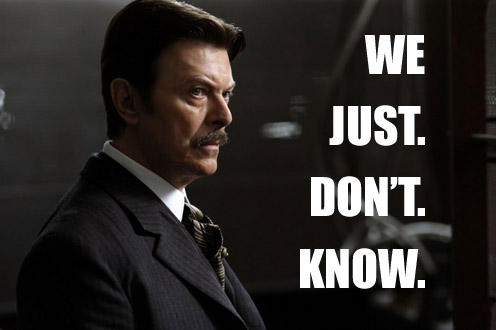Artists vs. Constraints
The medium of any given art form creates restraints or encourages certain properties in the art itself.
For example, movies and theatrical productions are somewhat constrained in duration by the capacity of the human bladder. Paintings tend to be painted at certain scales that are easier to perceive, to distribute, and to display. Writers paid for serialised content (such as Charles Dickens or people writing for a long-running TV series) can often see better financial returns if they can find a way to spin the story out for longer.
Here are three examples of this I find particularly pointed.
1 – Tintin
The Tintin comics were originally serialised in a newspaper supplement one page at a time. To entice people to purchase the next newspaper, it helps if there’s a cliffhanger of some sort at the end of each page. I found it very hard to read a collected Tintin comic in full once I spotted this pattern, because it turns out just about every single page contrives a cliffhanger, sometimes in a very silly way.



2 – Lubalin internet drama
Lubalin is a musician who (among other things) sets internet drama to music – that is, he takes slightly deranged exchanges (typos and all), and arranges them to music. Execution is everything, so check out part 1 as an example:
You can check out the rest in the series here.
The constraint here is that the current dominant algorithms really like 1-minute videos (specifically TikTok and Youtube shorts). In a ‘making-of’ video you can see the edited highlights of Lubalin constructing one of these songs. The notable moment comes at 8m 42s (link to that timestamp) when he plays what he has developed in full and is horrified to find it is quite a bit longer than a minute! So he has to adapt.

You get to see the constraint impact the art directly – and I think you can see how it slightly helps, but also slightly hinders. (You can skip to the final 1m song here)
3 – Calvin and Hobbes
Finally, Bill Watterson’s comic ‘Calvin and Hobbes’ was syndicated to newspapers between 1985 and 1995. The constraints on the Sunday supplement colour format were particularly harsh: panels 1 and 2 had to be optional (as they are sometimes dropped for space), and there had to be panel breaks in certain places so the comic could be reconfigured as necessary to fit a full, third or quarter-page format.

Eventually the strip grew popular enough that Watterson was able to mandate a single full-page format – which is still a constraint! – with some excellent results. Check the 25 examples here to see the range possible (note, just the ones in colour are the ones where these specific rules apply or were eventually avoided).
What do we conclude from this?
I like the two opposite reactions one can have:
– Take something wildly inappropriate for the constraints of the medium and try to cram it in anyway.
– When you can, question those constraints and see what you can achieve if you break some of them.
Perceiving Polarised Light with Haidinger’s brushes
This is incredible to me: it’s actually possible to perceive polarised light with your very own human eyes! Find an area of pure white on a polarised LCD screen (very likely whatever you are reading this on), then tilt your head from side to side. Faint bow-tie shaped areas of yellow (and apparently blue, but not for me?) will briefly be dimly visible as you tilt your head, caused by polarised light. Read more here:
https://theconversation.com/polarised-light-and-the-super-sense-you-didnt-know-you-had-44032
An advert where a bear directs a film
This is one of those adverts where the creative agency has so much fun with the execution that the purpose of the ad seems a bit of an afterthought. I love it!
This thing is 13 years old now and I keep going back to it every few years so I’m giving it official Thing status:
Bonus bear content via Clare:
Wildheart Animal Sanctuary on the Isle of Wight recently rescued two bears that had grown up knowing only cages and concrete – article here. They raised the funds for a purpose-built large natural enclosure. The bears arrived recently and have been exploring their new home. You can try to spot the bears via one of the live-streamed cameras, or watch them explore their new habitat in recent videos such as this one.
The Kuleshov Effect (via Josie)
Terse description from Wikipedia:
“The Kuleshov effect is a film editing (montage) effect demonstrated by Russian film-maker Lev Kuleshov in the 1910s and 1920s. It is a mental phenomenon by which viewers derive more meaning from the interaction of two sequential shots than from a single shot in isolation.”
When moving pictures first became possible, it was not obvious that a ‘cut’ would be something a viewer would accept, and early movies were often presented with very few cuts following the established art form of the play.
It turns out several dramatic things happen in the human mind with a cut:
1) An instant change in perspective is … just completely acceptable!
2) Much like Grice’s maxim of relation in language, we assume a cut within a scene has meaning – for example, if we see a character notice something off-screen, then cut to a thing, we assume they are looking at that thing. The mild version of the Kuleshov effect.
3) Building on top of the above point, the full surprise of the Kuleshov effect is that we may even overinterpret the images either side of an edit to have them make more sense!
You get essentially the same effect in comics or any sequence of panels, for example just putting these two images together implies they are related, and our mind invents a story:

You can also see the same effect distilled in GIF form:

You also get a version of this when giving a slide presentation – you can accompany some text or spoken word with an illustration, and the mind of the viewer will automatically interpret them together. This is why a presentation can be improved even with some barely relevant images!
Beyond that, I think there are even weirder effects somehow going on that relate to how we process movies:
4) Non-linear editing, in which edits go forward and back in time (such as Memento, The Prestige, Speed Racer) are also fully comprehensible, if handled carefully
5) Non-diegetic music (music that is not happening in the scene, e.g. the sound of a John Williams score in a space battle) weirdly doesn’t seem weird
One of my favourite examples of this: from pure sound design and Kuleshov effect, Rian Johnson conveyed Rey and Kylo communicating with one another across space in The Last Jedi with nothing more than an edit.
Another corollary is that you can splice new footage into old, and if you take advantage of how we interpret edits, you can recontextualise the old footage to make it seem as if, for example, Star Wars characters are drinking Cristal Beer.
Anti-basilisks
Before we begin, some necessary context: an “infohazard” is information that could harm people if known. There are many tweaks, shades and nuances to this; you can find ‘fun’ examples over at the SCP Foundation (their wiki page on the topic; search for SCP entries tagged as infohazard here), or this very enticing trailhead I have not followed at Lesswrong: “a typology of infohazards”.
Below I’m going to describe something that some consider to be an infohazard, or just dangerously adjacent to one. I will go on to explain why actually I don’t think it is (although the adjacency remains possible). This is the last Thing in the post, so if that freaks you out you can just stop now!
I will give you some space to do so.
–
–
–
–
–
–
I’m referring to Roko’s basilisk, which is nicely summarised on Wikipedia. It’s a theoretical superintelligent AI that we could build which would “punish anyone who knew of its potential existence but did not directly contribute to its advancement or development, in order to incentivize said advancement”.
So, you see the problem. It’s clearly a very stupid thing to build, but now you know about it, so you can infer that other people know about it, which means that some of them might eventually have the means and motivation to build it, which in turn maybe means you should help them do that to avoid this ‘punishment’ – probably at minimum by telling more people about it!
The first version I encountered contained the threat that even if this basilisk does not come about until long after I’m dead, nonetheless it would review history and then simulate the minds of the non-contributors in order to punish them. At first I felt no concern about what may happen to some theoretical simulated me, but I suppose the real threat is that the ‘me’ right now might actually be the simulation it is running rather than the original me, and as such I am not safe!
So, maybe if you squint hard you should worry about this a bit, but my counter is that if such a thing is possible, many other similar things are possible that could easily cancel this out.
The anti-Roko’s-basilisk
A superintelligent AI that destroys any instance of Roko’s basilisk it can find, and will reward (or retroactively simulate rewarding) anyone who helps bring it about.
The double anti-Roko’s-basilisk
It’s like the anti-Roko’s-basilisk but it also specifically rewards anyone that would be punished by a Roko’s basilisk twice over (perhaps by simulating two instances of them having a great time), and anyone who helps build it three times over. So you should definitely build this one, and even if you don’t, maybe other people will, and it more than cancels out the antics of Roko’s basilisk.
At this point I think it’s pretty clear we’re just inventing imaginary monsters having imaginary fights, making the whole thing seem quite childish and inconsequential, and certainly not motivating enough to start worrying about making or not making any such things.

Anyway, just to keep things sufficiently spooky, let’s talk about adjacency.
LessWrong was founded by Eliezer Yudkowsky, and when LessWrong user Roko posted the original formulation of the basilisk, Yudkowsky gave an uncharacteristically blunt response and banned the topic for 5 years (as recounted in the Wikipedia article). It did look like a bit of an overreaction, but as that article goes on to recount, he later explained (or post-rationalised) his reaction, most notably with this:
“The problem was that Roko’s post seemed near in idea-space to a large class of potential hazards, all of which, regardless of their plausibility, had the property that they presented no potential benefit to anyone.”
I find that idea quite compelling. It’s very hard to know how large this hazardous part of idea-space is, but it seems like it could be non-zero. I can imagine using the basilisk concept as a springboard into conceiving the most hazardous ideas possible, but at this time I am choosing not to do that, because there really is no potential benefit to anyone.
What about the opposite… the infobeneficial? Well, hopefully that’s everything else you find in Things, at least to some extent.
- Transmission ends
